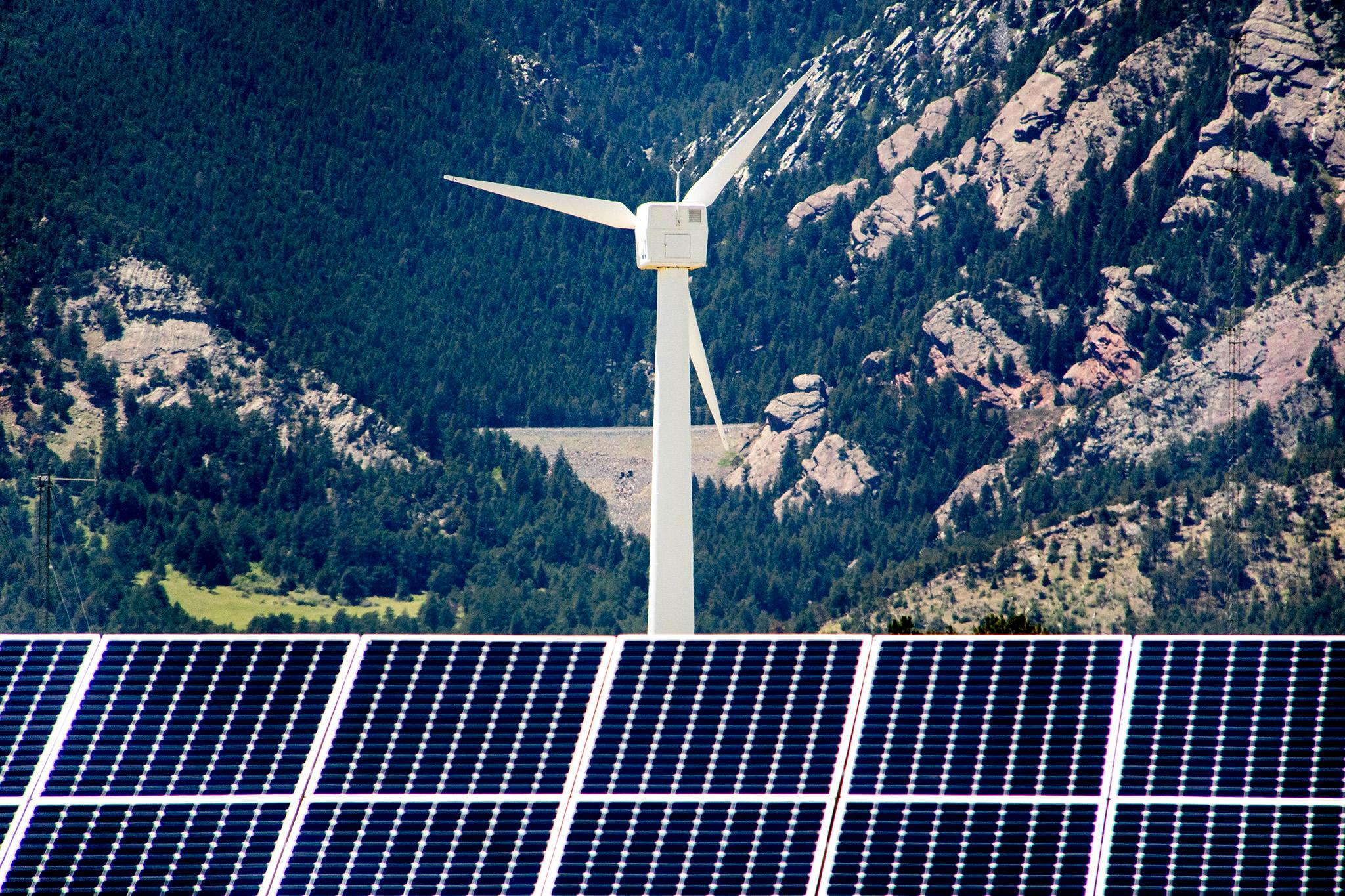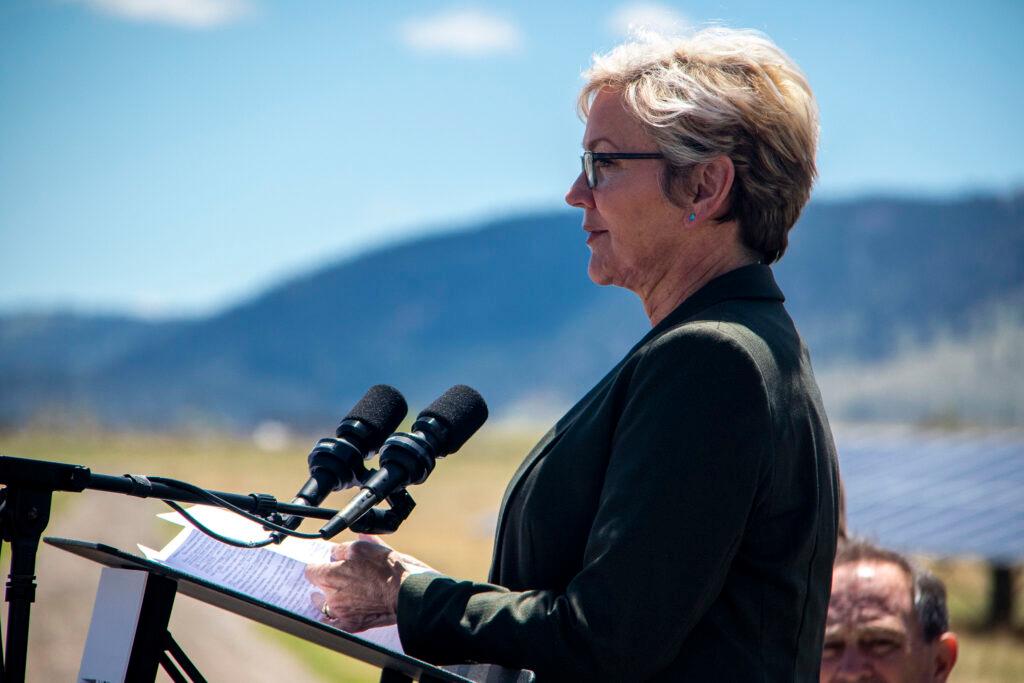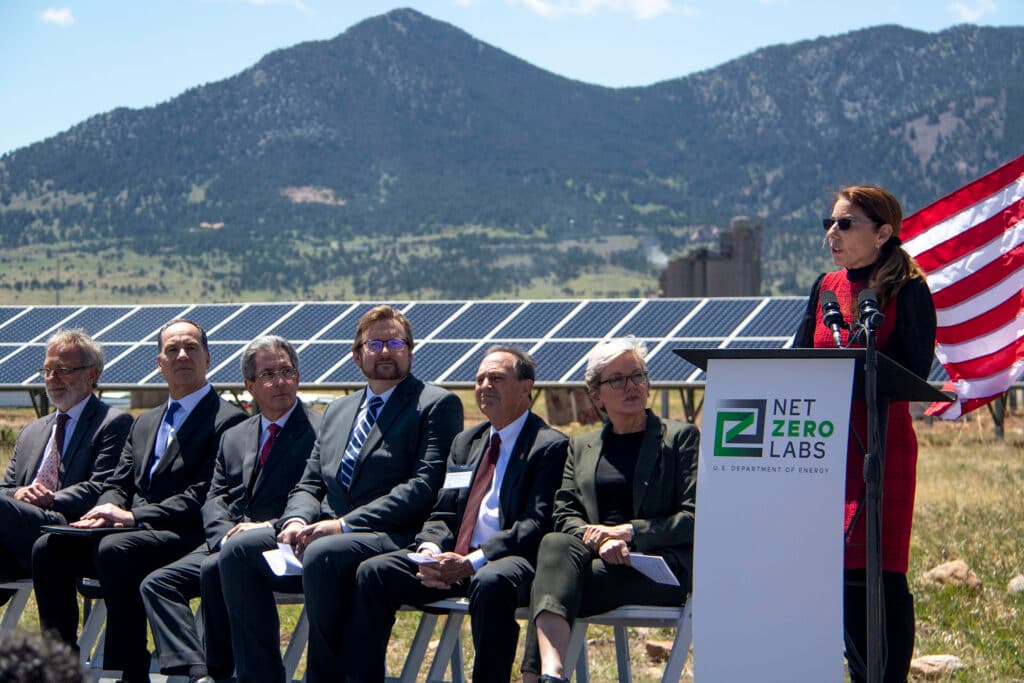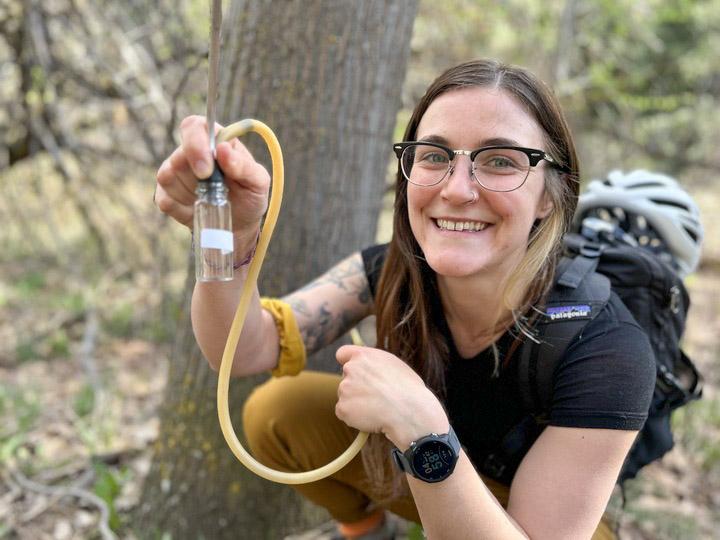
For more than 40 years, researchers at the National Renewable Energy Laboratory in Golden, Colo., have helped make wind and solar energy a viable alternative to fossil fuels.
Now the laboratory itself is ready to make the switch.
On Wednesday, U.S. Secretary of Energy Jennifer Granholm traveled to NREL to announce Net Zero Labs, a $38 million initiative to begin eliminating the climate impact of the 17 national laboratories overseen by the U.S. Department of Energy. The agency plans to pilot the effort at NREL and three other national laboratories.
Granholm said the initiative would demonstrate how other industries and government facilities can eliminate their planet-warming footprint by focusing on research centers with supercomputers and other energy-hungry equipment.
"Scientists are telling us we got to get to net-zero by 2050," Granholm said. "That means we got to deploy, deploy, deploy. It also means we got to innovate, innovate, innovate."

Other laboratories included in the program's pilot phase include the Pacific Northwest National Laboratory in Richland, Wash., the Idaho National Laboratory in Idaho Falls, Idaho and the National Energy Technology Laboratory in Pittsburgh. Granholm said more funding should be available next year for projects at additional research facilities operated by the federal agency.
NREL Director Martin Keller said the Colorado laboratory plans to lead the pack to prove the new technologies could work elsewhere.
“Our campuses are living laboratories. Our facilities are research instruments that test and demonstrate our innovations,” Keller said.
Plans are already underway to eliminate all carbon emissions from its Flatirons Campus in Arvada by the end of next year. NREL uses that location to test wind turbine systems. Electric heating systems will be added to take advantage of the renewable resources, while additional energy storage will help even the flow of electricity, Keller said
The 327-acre NREL campus at the base of South Table Mountain in Golden is a tougher task. It comprises 17 buildings with more than a million square feet of office and laboratory space. NREL plans to achieve net-zero emission at that campus by the end of 2026.
NREL has already been working to make the campus as self-sufficient as possible. Two of the buildings have already achieved net-zero energy designations, which means they produce as much electricity as they consume through on-site renewables.
Michelle Slovensky, the intelligent campus program manager at NREL, said one of the sprawling research facilities built in 2010 helped scientists develop net-zero energy standards. Thanks to those efforts, hundreds of other buildings have since achieved the same equilibrium.
"This has been a defining commercial building at scale — and it's been replicated," Slovensky said.

The federal agency’s announcement marks a shift away from "net-zero energy" to "net-zero emissions." Slovensky said the change means the campus must go further than matching its own electricity consumption and eliminate natural gas as a heat source.
NREL’s natural gas boilers are located in brutal 1980s buildings in an original laboratory facility on the outskirts of the campus. Slovensky said it was abandoned as a workspace partially because the south-facing windows proved too effective at trapping heat.
"Back then, they thought it was really good to have passive solar exposure, but then you cook everybody," Slovensky said.
Slovensky said a biomass plant, which burns beetle-killed trees and other waste lumber, currently meets about half of the heating needs on campus. The other half comes from Xcel Energy’s natural gas system.
Slovensky said eliminating the methane-based gas system requires finding and tapping other wasted energy across the campus. One resource is a massive supercomputer at the facility, which produces a regular supply of excess heat that’s already used to warm one building. This extra heat could eventually be pumped into a new "thermal loop" supplying more of the campus, Slovensky said.
A "distributed energy district" under construction on the east side of the campus could provide additional options. Slovensky said it would eventually contain state-of-the-art batteries and hydrogen storage systems, which could help bank renewable energy generated on the campus, further reducing the need for natural gas.
Even if all those projects succeed, Slovensky doesn't imagine NREL will ever cancel its gas service. Xcel Energy is currently working on plans to clean up its gas supply by providing recovered methane or adding green hydrogen to the mix.
While environmental and consumer advocates are skeptical of those plans, Slovensky thinks it could eventually serve as a reliable, carbon-free backup as NREL treats its campus as a living energy experiment.
"When Xcel winds up creating renewable natural gas, we want to use it from a resilience standpoint,” she said. “In the meantime, we're going to look to hydrogen fuel cells, battery storage, more solar and geothermal."







